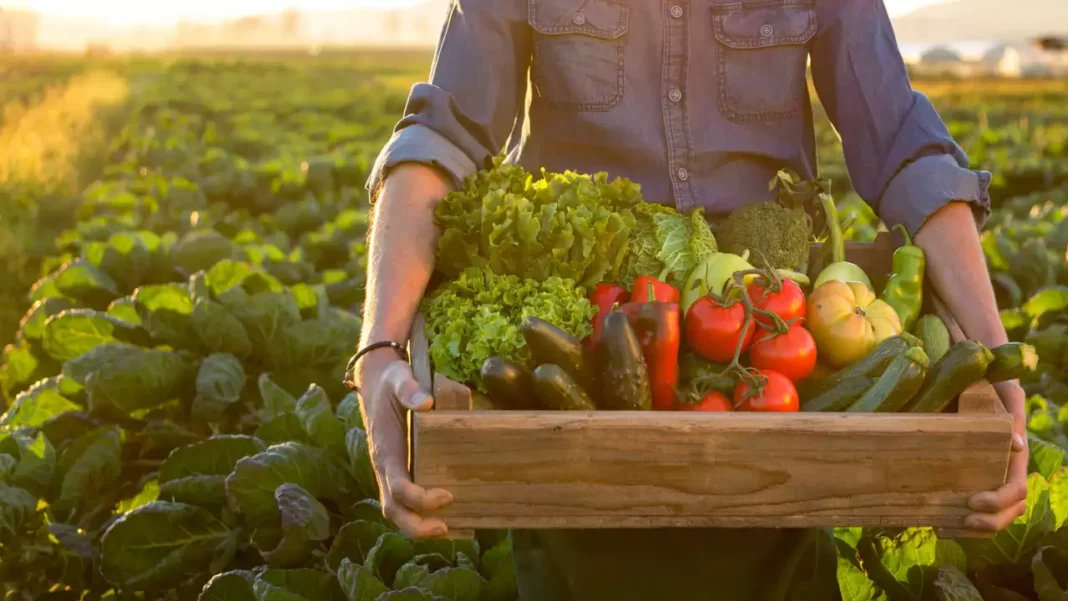The first-ever UN roadmap for reducing climate-heating emissions from the world’s farming sector, unveiled at the COP28 UN climate summit this month, has stirred debate around how to fairly share the burden of shifting to greener practices.
Check Out Other Articles: Over 130 countries commit to reducing carbon emissions in worldwide food system at COP28
Certain agricultural experts advocate for the complete phase-out of fertilisers and other agro-chemicals, whose production is heavily dependent on fossil fuels. Meanwhile, others argue that poorer countries will still require these inputs to enhance low crop yields.
Food systems, encompassing cultivation practices, inputs such as fertilisers, storage, transportation, and waste, contribute to almost one-third of global greenhouse gas emissions.
The latest proposal, put forth by the Food and Agriculture Organization (FAO) of the United Nations, aims to eradicate hunger and malnutrition while aligning with the most ambitious goal of the Paris Agreement, which seeks to cap global warming at 1.5 degrees Celsius.
It suggests actions to enhance farm productivity while reducing emissions of methane, carbon dioxide, and other greenhouse gases across ten domains. These include adopting clean energy, restoring soil and pastures, and minimizing chemical inputs, food loss, and waste.
Furthermore, it suggests that affluent nations should reduce their substantial consumption of animal-source foods. This adjustment aims to facilitate developing nations in increasing their consumption without causing harm to the climate and the environment.
The roadmap is the first of a series that the FAO will unveil at three annual climate summits, starting with this year’s global overview and detailing next how to make food systems work better for people and the planet at the regional and country levels.
Emile Frison, from the International Panel of Experts on Sustainable Food Systems, expressed approval for the first plan and its “emphasis on a just transition.” However, he noted in a statement that it falls short as it primarily concentrates on incremental enhancements to the current “flawed” industrial food system.
“These efficiency-first proposals are unlikely to be enough to get us off the high pollution, high fossil fuel, high hunger track we’re on,” said the conservation and biodiversity expert.
Patty Fong, the program director at the Global Alliance for the Future of Food, a coalition of nearly 30 philanthropic foundations, asserted that achieving genuine sustainability in food systems demands a dedication to phasing out fossil fuels across the entire value chain, from farm to fork.
However, the roadmap advocates for reduced fertilizer use through increased efficiency rather than a complete transition to sustainable farming practices such as agro-ecology, she pointed out.
Others argued that chemical fertilisers are indispensable for enhancing food security in developing nations with meager crop yields and a substantial proportion of smallholder farmers.
Aditi Mukherji, from the CGIAR global research partnership on food systems, emphasized that solutions should be tailored to specific contexts. She highlighted the necessity for sustainable intensification of agriculture in impoverished regions with low productivity.
“But certainly, this is not true of high-income countries,” she told Context.
In many low-income countries, achieving greater agricultural efficiency and bolstering climate resilience could lead to reduced emissions by mitigating crop losses and minimizing post-harvest waste, she observed.
These discussions are unfolding on the ground in nations such as India, where agriculture stands as the largest employer, sustaining the livelihoods of 250 million farmers and labourers.
Their tasks are becoming more challenging due to the difficulties posed by climate change, making a livelihood from farming arduous and leading to increased debt, migration, and even suicides. Concerns about declining yields have prompted a general increase in the use of chemical fertilisers.
However, an increasing number of smallholder farmers are experimenting with green approaches that endorse organic, natural, or sustainable methods. The extent and success of these initiatives will depend on how effectively they can safeguard incomes, as highlighted by agricultural experts in the given context.
For instance, despite having heard of many farmers switching to natural cultivation methods, Shashikant Shukla continues to grow wheat and pulses using chemical inputs on his half an acre of land in northern India’s Uttar Pradesh state.
His yields and income have been constrained by unpredictable monsoon rains, untimely downpours, and premature heatwaves, exacerbated by climate change. Additionally, rising costs for fertilisers and other overheads have further compounded the challenges he faces.
“I am constantly living in debt; I do not have the courage to experiment on my farm,” said Shukla, who makes up for his climate-related harvest losses by working as a driver-for-hire.
Even if he does try growing organic wheat, he would end up selling it at the same price as conventional wheat – and if it leads to a dip in yields, “it will break my back,” he added.
Transitioning to natural farming frequently results in a decline in yields during the initial years before harvests gradually improve—an outcome that is challenging for many impoverished Indian farmers to endure.
They depend on government purchases of their staple crops, such as rice and wheat, at assured prices and seldom have funds set aside to alter their practices without external assistance.
Devinder Sharma, an independent expert on agricultural policy, emphasized to Context that India must transition towards ecological farming practices. However, he added that green initiatives will only bring about superficial changes unless farmers are provided with a guaranteed income.
Smallholder farmers interviewed by Context for a recent series on achieving a fair green transition in Indian agriculture highlighted various challenges. These ranged from the absence of access to high-quality seeds and markets offering premium prices to the limited availability of natural manure and the burden of high labor costs.
Sharma suggested that smallholder farmers would gain from a government-supported guaranteed price for naturally grown produce, along with subsidies to mitigate any losses and the establishment of more robust marketing channels.
A broad transition to low-carbon, climate-resilient food production, as delineated in the recent UN roadmap, will be effective only if it places farmers at the core and offers the necessary finance, infrastructure, and technology to help them adapt to increasingly extreme weather conditions and embrace greener practices, according to experts.
Another FAO report, supplementing the 1.5°C blueprint, cautioned that insufficient climate finance is being directed towards agriculture.
Between 2000 and 2021, agri-food systems received about US$183 billion, or just 4 per cent of overall climate finance flows, the report said. It noted that the annual allocation for farming fell 12 per cent to US$19 billion in 2021, while hundreds of billions are required.
Moreover, in that same year, only 0.3 per cent of international climate finance from both public and private sources reached smallholder farmers. This group, requiring significant support in the transition to sustainable agriculture, was highlighted in a separate analysis by the Amsterdam-based think-tank Climate Focus.
According to Fong from the Global Alliance for the Future of Food, marginalized groups, including smallholder farmers, should have the opportunity to actively contribute to devising strategies for transforming global food systems.
“Grassroots producers — particularly smallholder farmers, women and Indigenous communities — must be included in all discussions,” she said in a statement on the FAO roadmap.


